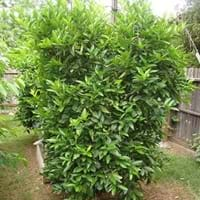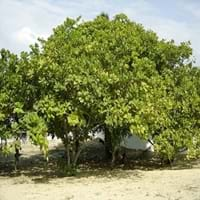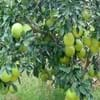Life Span
Perennial
Perennial
Origin
Southeastern Asia
Mexico, Central America, South America
Types
not available
Not Available
Number of Varieties
Not Available
Habitat
Temperate Regions
Tropical regions
USDA Hardiness Zone
10-11
10-15
Sunset Zone
H1, H2, 8, 9, 12, 13, 14, 15, 16, 17, 18, 19, 20, 21, 22, 23, 24
H2
Habit
Oval or Rounded
Oval or Rounded
Flower Color
White
Green, Yellow green, Light Green
Flower Color Modifier
Bicolor
Bicolor
Fruit Color
Green, Yellow green
Brown
Leaf Color in Spring
Green, Light Green
Green, Dark Green
Leaf Color in Summer
Green, Light Green
Green, Dark Green
Leaf Color in Fall
Green, Light Green
Green, Dark Green
Leaf Color in Winter
Light Green
Green, Dark Green
Leaf Shape
Ovate
Elliptic
Plant Season
Spring, Summer, Fall, Winter
Spring, Summer, Fall, Winter
Sunlight
Full Sun, Partial Sun
Full Sun
Type of Soil
Loam
Loam, Sand
The pH of Soil
Acidic, Neutral
Acidic, Neutral, Alkaline
Soil Drainage
Well drained
Well drained
Bloom Time
Indeterminate
Late Spring, Early Summer, Summer
Tolerances
Drought
Drought
Where to Plant?
Container, Ground, Pot
Ground
How to Plant?
Seedlings, Transplanting
Seedlings
Plant Maintenance
Medium
Medium
Watering Requirements
Do Not over Water, Requires regular watering
Do Not over Water, It cannot sustain wet-feet, Keep the ground moist but not water-logged, Never Over-water, Requires watering in the growing season, Water when soil is dry
In Summer
Lots of watering
Lots of watering
In Spring
Moderate
Moderate
In Winter
Average Water
Average Water
Soil pH
Acidic, Neutral
Acidic, Neutral, Alkaline
Soil Type
Loam
Loam, Sand
Soil Drainage Capacity
Well drained
Well drained
Sun Exposure
Full Sun, Partial Sun
Full Sun
Pruning
Prune in summer, Remove damaged leaves
Remove damaged leaves, Remove dead branches, Remove dead leaves
Fertilizers
All-Purpose Liquid Fertilizer
All-Purpose Liquid Fertilizer
Pests and Diseases
Aphids, Mites, White outside
Red blotch
Plant Tolerance
Drought
Drought
Flowers
Insignificant
Insignificant
Flower Petal Number
Single
Single
Foliage Texture
Medium
Coarse
Foliage Sheen
Glossy
Glossy
Attracts
Birds, Butterflies
Birds
Allergy
Dental erosion
Gastric, Kidney Stone
Aesthetic Uses
Not Used For Aesthetic Purpose
Not Used For Aesthetic Purpose
Beauty Benefits
Not Available
Not Available
Environmental Uses
Air purification
Air purification, Food for birds, Food for insects, Prevent Soil Erosion
Medicinal Uses
Not Available
Nutrients, Stomach aliments, Treatment of ulcers, Weight loss
Part of Plant Used
Fruits
Fruits, Seeds, Stem
Other Uses
Used As Food, Used in making beverages
Economic Purpose, Used As Food, Used in making beverages
Used As Indoor Plant
Yes
No
Used As Outdoor Plant
Yes
Yes
Garden Design
Container, Edible, Fruit / Fruit Tree, Topiary / Bonsai / Espalier, Tropical
Edible, Tropical
Botanical Name
CITRUS aurantiifolia 'Bearss'
ANACARDIUM occidentale
Common Name
Bearss Lime, Shiraz Limoo, Tahiti Lime
Acajou, Cashew
In Hindi
Shiraz Limoo
काजू के पेड़
In German
Bearss Kalk
Cashew Baum
In French
Bearss chaux
Anacardier
In Spanish
Bearss cal
árbol de anacardo
In Greek
BEARSS ασβέστη
δέντρο κάσιους
In Portuguese
Bearss cal
cajueiro
In Polish
bearss wapna
drzewo nerkowca
In Latin
bearss lime
cashew ligno
Phylum
Not Available
Magnoliophyta
Class
Not Available
Magnoliopsida
Order
Sapindales
Sapindales
Family
Rutaceae
Anacardiaceae
Clade
Angiosperms, Eudicots, Rosids
Angiosperms, Eudicots, Rosids
Tribe
Not Available
Not Available
Subfamily
Not Available
Anacardium occidentale, Mangifera indica 'Champagne', Pachycormus discolor, Pistacia chinensis
Importance of Bearss Lime and Cashew
Want to have the most appropriate plant for your garden? You might want to know the importance of Bearss Lime and Cashew. Basically, these two plants vary in many aspects. Compare Bearss Lime and Cashew as they differ in many characteristics such as their life, care, benefits, facts, etc. Every gardener must at least have the slightest clue about the plants he wants to plant in his garden. Compare their benefits, which differ in many ways like facts and uses. The medicinal use of Bearss Lime is Not Available whereas of Cashew is Nutrients, Stomach aliments, Treatment of ulcers and Weight loss. Bearss Lime has beauty benefits as follows: Not Available while Cashew has beauty benefits as follows: Not Available.
Compare Facts of Bearss Lime vs Cashew
How to choose the best garden plant for your garden depending upon its facts? Here garden plant comparison will help you to solve this query. Compare the facts of Bearss Lime vs Cashew and know which one to choose. As garden plants have benefits and other uses, allergy is also a major drawback of plants for some people. Allergic reactions of Bearss Lime are Dental erosion whereas of Cashew have Gastric and Kidney Stone respectively. Having a fruit bearing plant in your garden can be a plus point of your garden. Bearss Lime has showy fruits and Cashew has no showy fruits. Also Bearss Lime is not flowering and Cashew is not flowering . You can compare Bearss Lime and Cashew facts and facts of other plants too.





